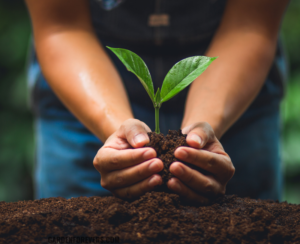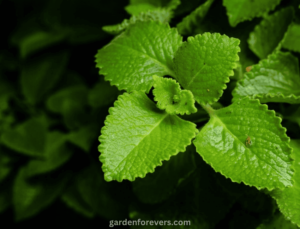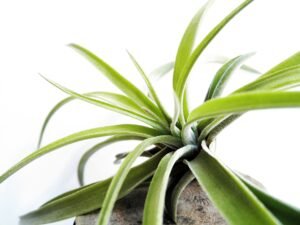Complete Guidelines: How to Grow Organic Spinach

Spinach is more than just a nutrient-rich vegetable it’s a gardener’s delight that thrives across various climates, making it a favorite for both home growers and commercial farmers. Proper care not only ensures a continuous supply of fresh, delicious greens but also enhances their taste and nutritional value. Whether you’re cultivating spinach in your backyard or sourcing it from the market, a little attention to its needs can make all the difference. In this guide, I’ll share simple yet effective tips to help you grow healthy spinach plants and enjoy the benefits of this versatile vegetable.
When to plant spinach
Spinach thrives in cool weather, so planting times depend on the season and your specific USDA planting zone. Here’s a detailed guide:
1. Spring Planting
- Sow seeds 4–6 weeks before the last frost date in your area. This allows spinach to grow in the cooler part of spring.
- For northern regions, this is typically March to early April, while southern areas may start as early as late February.
2. Fall Planting
- For a fall harvest, plant seeds 6–8 weeks before the first frost date. This is usually August to September in most regions.
- Spinach will grow steadily as temperatures cool and provide a harvest well into the fall.
3. Winter Planting (Mild Climates)
- In USDA Zones 7–10, you can sow spinach in late fall (October to November). The crop will overwinter and resume growth in early spring, giving you an early harvest.
4. Succession Planting
- To enjoy continuous harvests, sow new seeds every 2–3 weeks during the growing season.
Pro Tip:
Use row covers in colder regions to extend the growing season or protect young plants from unexpected frosts. Proper timing ensures tender, flavorful leaves and avoids bolting during hot weather.
Types of Spinach
Spinach comes in three main types, each with its own charm:

- Savoy Spinach: Crinkled, dark green leaves perfect for cooking but a bit tricky to clean.
- Flat-Leaf Spinach: Smooth, tender leaves that are easy to clean and ideal for salads or smoothies.
- Semi-Savoy Spinach: A mix of both, with slightly crinkled leaves that are versatile and easy to manage.
Each type offers something unique, making spinach a versatile choice for any dish or garden.
How to Plant Spinach
Planting spinach is easier than you might think, and with the right steps, you can enjoy fresh, vibrant leaves in no time. From my experience, the secret lies in preparing nutrient-rich soil and planting at the right time. Start by sowing seeds directly into well-drained soil about ½ inch deep and 2–4 inches apart. With consistent watering and some patience, you’ll see those little sprouts appear, bringing you one step closer to a healthy, homegrown harvest. Let’s dive into the process and make spinach planting a breeze
Soil Preparation
Spinach prefers well-drained soil with a pH level between 6.0 and 7.0. Before planting, amend the soil with compost or well-aged manure to improve its fertility and structure. Ensure the soil is loose and crumbly to allow good root penetration and water drainage. Avoid planting spinach in soil that has recently been used to grow members of the same family.
Planting Spinach
Spinach can be grown from seeds or transplants. If starting from seeds, sow them directly in the garden bed, spacing them about 1 inch apart, and lightly cover them with soil. If using transplants, plant them at the same depth as they were in their pots, spacing them 4 to 6 inches apart. Plant in rows spaced 12 to 18 inches apart. For best results, plant spinach in your prepared soil in early spring or late summer. It prefers cool temperatures and may bolt (go to seed) prematurely in hot weather.
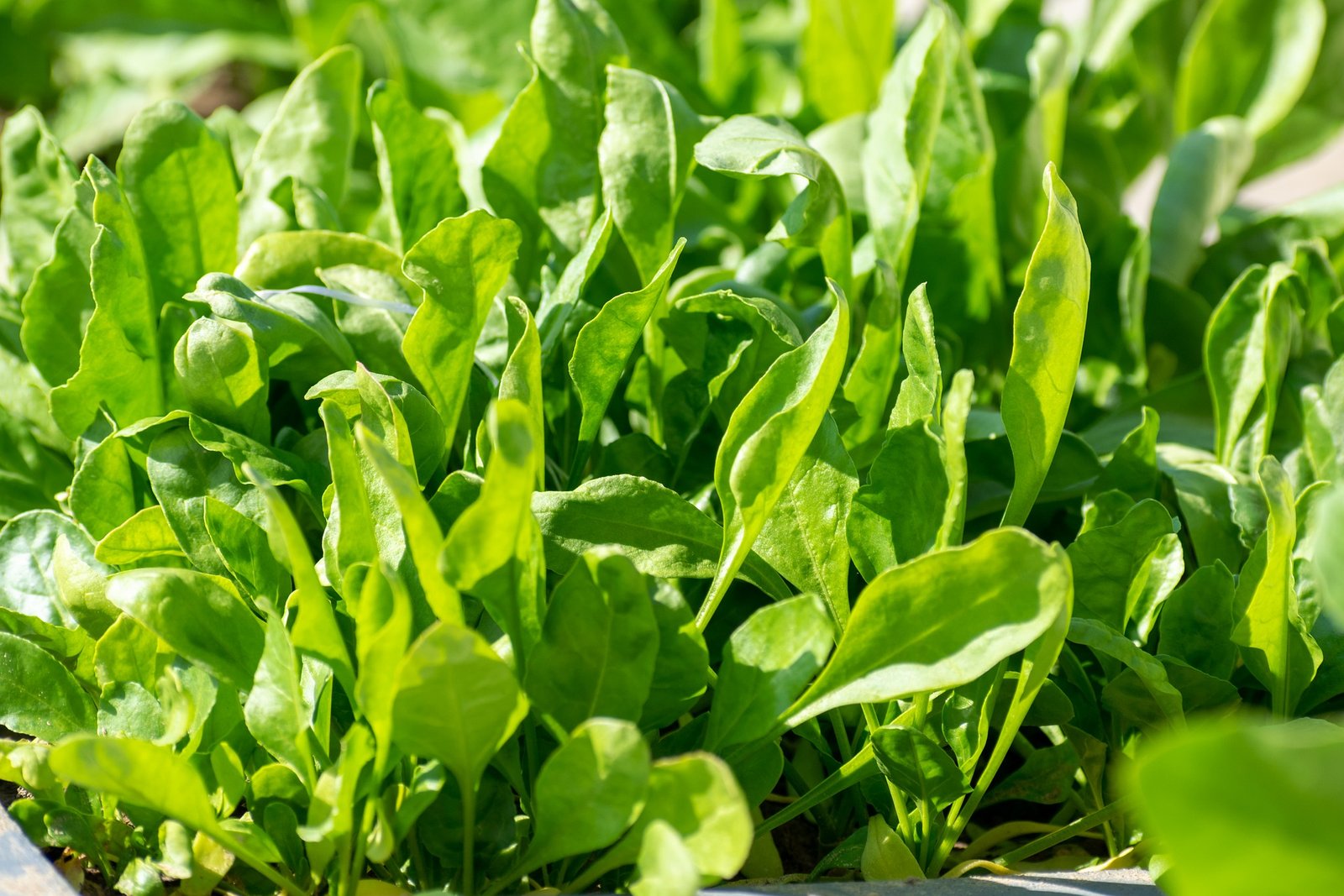
Watering Spinach
Keep the soil consistently moist but not waterlogged. Spinach has shallow roots and is sensitive to drying out, especially in hot weather. Water the spinach plants in the morning so the leaves dry before evening, which can help prevent fungal diseases. Mulch around the plants to retain soil moisture and suppress weeds.
Fertilizing Spinach
Spinach is a moderate feeder and benefits from regular fertilization. Apply a balanced fertilizer or compost tea every 3 to 4 weeks during the growing season. Avoid over-fertilizing, as excess nitrogen can encourage leaf growth at the expense of flavor and increase the risk of bolting, which causes the plant to die before it matures. For spinach to thrive, enriching the soil with natural nutrients is essential. Using homemade compost from kitchen waste is a sustainable way to boost soil fertility and ensure healthy growth. Learn the steps to create your own eco-friendly fertilizer in our guide on How to Prepare Organic Fertilizer from Kitchen Waste.
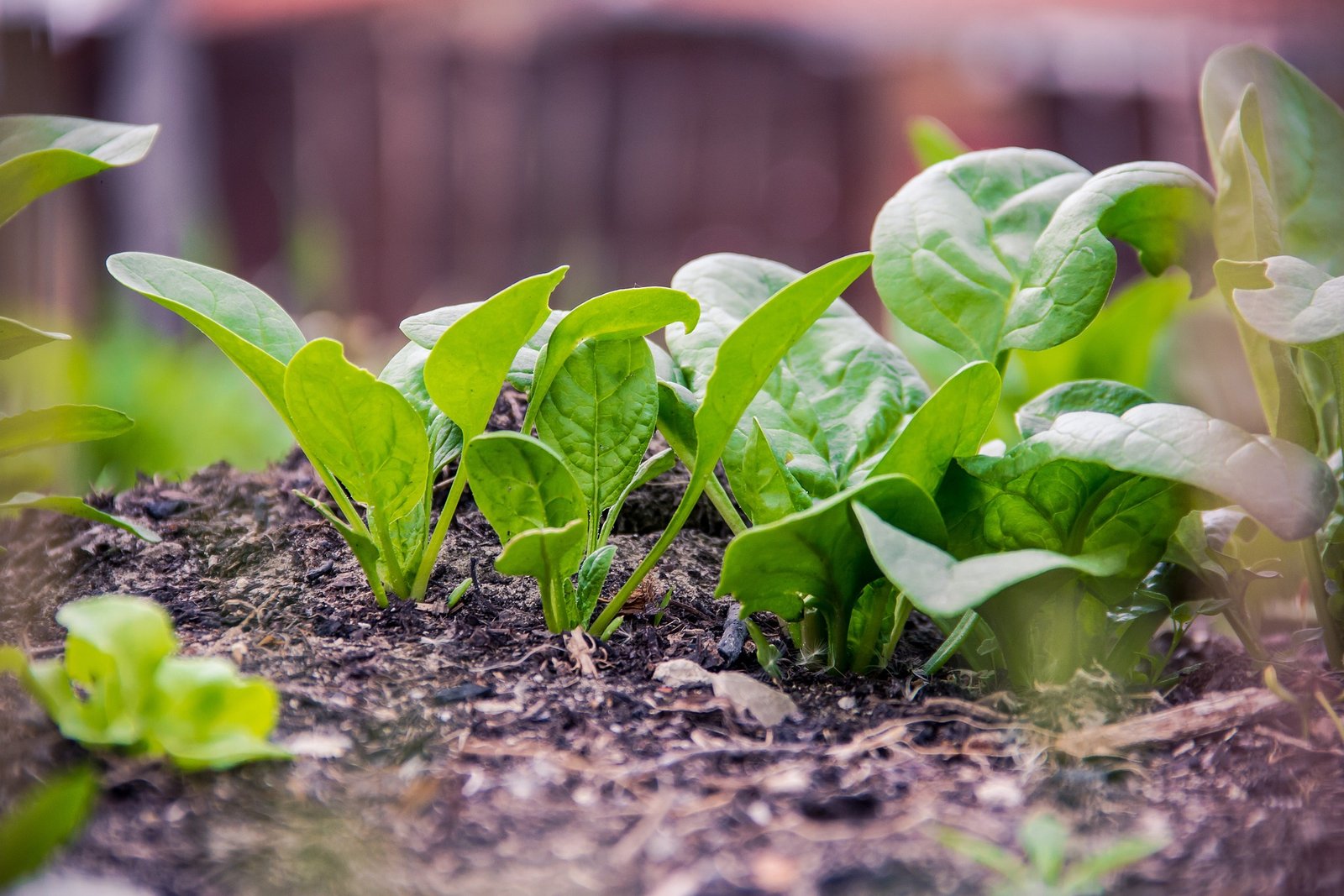
Common Pests and Plant Diseases
Over the years, I’ve learned that keeping spinach plants pest-free and healthy requires regular observation and a proactive approach. Common pests like aphids, flea beetles, and leaf miners can damage leaves, while diseases such as downy mildew and fusarium wilt can spread quickly if not managed. I always start by inspecting my plants weekly, paying close attention to the undersides of leaves, where pests often hide. Hand-picking larger pests has been effective, but for smaller infestations, I use a safe insecticidal soap to keep things under control.
For diseases, crop rotation has been a lifesaver, breaking the cycle of soil-borne infections. Removing infected plants immediately is crucial to stop the spread, and keeping the garden free from debris helps reduce fungal problems. Healthy soil and proper watering techniques also go a long way in keeping plants strong and disease-resistant.
Quick Tips for Managing Pests and Diseases:
- Inspect plants weekly for early signs of damage.
- Use insecticidal soap or neem oil to handle minor pest infestations.
- Hand-pick larger pests like caterpillars or beetles.
- Practice crop rotation to prevent soil-borne diseases.
- Remove infected plants immediately to protect healthy ones.
- Avoid overhead watering to reduce fungal infections.
Propagating Spinach
Spinach is best propagated from seeds, especially after the plant bolts and produces flower stalks. Once the seed pods turn brown and dry, they’re ready to harvest. I carefully cut the stalk, let it dry further in a paper bag, and then gently crush the pods to collect the seeds. Storing these seeds in a cool, dry place ensures they’re ready for the next growing season. This easy process saves money and keeps your garden sustainable.
When to harvest spinach from garden

Harvesting spinach at the right time ensures the best flavor and texture, and I’ve found that timing is everything. Typically, spinach is ready to harvest 6–8 weeks after planting, or when the leaves are large enough to use—usually about 4–6 inches long. From my experience, it’s best to pick spinach early in the morning while the leaves are fresh and hydrated, especially during cooler weather.
I like to harvest the outer leaves first, allowing the inner ones to grow, which helps extend the plant’s productivity. If I notice the plant starting to bolt (sending up a flower stalk), I immediately harvest all the leaves to prevent them from becoming bitter. For baby spinach, I gently cut the leaves when they’re about 2–3 inches long, and they grow back quickly, giving me multiple harvests from one planting.
Here are a few tips I follow:
- Inspect regularly: Check your plants every few days to avoid missing the peak harvest time.
- Use clean scissors or hands: This minimizes damage and keeps plants healthy.
- Don’t wait too long: Older leaves can become tough or bitter, so harvest regularly.
With these simple steps, I’ve enjoyed a steady supply of fresh, delicious spinach straight from my garden. Trust me, there’s nothing like the taste of homegrown greens.
Potting and Repotting Spinach
Potting spinach is all about giving the roots enough space to grow while ensuring proper drainage. From my experience, a container about 6–8 inches deep works perfectly. I fill it with nutrient-rich potting mix, ensuring it’s loose and well-draining. When repotting, I wait until the plants are about 3–4 inches tall or show signs of outgrowing their space.
How long does it take for spinach to grow
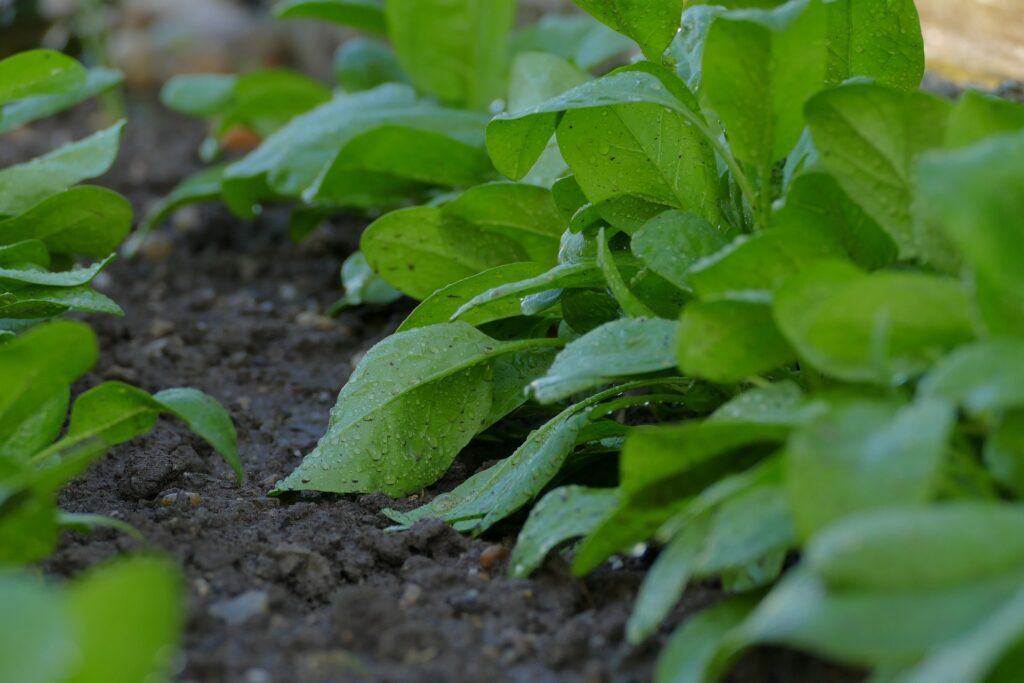
Spinach is one of the quickest vegetables to grow, and in my experience, it takes about 6–8 weeks from planting to harvest. Baby spinach leaves can be ready in as little as 3–4 weeks, which is perfect if you enjoy tender, young greens. The key is providing the right conditions cool weather, consistent watering, and nutrient-rich soil. Watching those tiny seeds sprout and grow into lush, vibrant leaves in just weeks is so rewarding. Trust me, the wait is short, and the fresh, homegrown taste is absolutely worth it.
When to harvest spinach seeds
Harvesting spinach seeds takes patience but is incredibly rewarding. From my experience, the best time to collect seeds is when the plant has fully matured and started to bolt, usually about 6–8 weeks after flowering begins. The seed pods will turn brown and dry, signaling they’re ready for harvest. I gently cut the stalks and place them in a paper bag to dry further before separating the seeds. Timing is key—waiting too long can cause seeds to fall to the ground, while harvesting too early may yield immature seeds. With a little care, you’ll have plenty of seeds for your next planting season.
Best containers for growing spinach
Choosing the right container can make all the difference when growing spinach. From my experience, I’ve found that wide and shallow containers, at least 6–8 inches deep, work best. Spinach roots don’t grow too deep, so containers with good drainage and plenty of surface area allow the plants to spread and thrive. I personally love using lightweight fabric pots or rectangular plastic planters because they retain moisture while preventing waterlogging. For smaller spaces, even a sturdy recycled bucket or wooden crate can work wonderfully, as long as there are drainage holes. With the right container, growing spinach becomes both simple and rewarding.
Hydroponic spinach grow time
Growing spinach hydroponically has been a game-changer for me, offering faster growth and healthier plants compared to traditional soil methods. Typically, hydroponic spinach takes around 4–6 weeks from seed to harvest, depending on the variety and growing conditions. I’ve noticed that with the right balance of nutrients, light, and water, the growth rate can be incredibly consistent.
After germination, which takes about 5–7 days, the seedlings quickly establish themselves in the hydroponic system. Transitioning between weeks, you’ll see noticeable growth, and by the fourth or fifth week, the leaves are usually large enough to harvest. For baby spinach, I often start picking leaves as early as 3 weeks, while full-sized spinach takes just a little longer.
From my experience, maintaining proper pH levels (5.5–6.5) and ensuring about 12–14 hours of light daily are critical for optimal growth. With hydroponics, the entire process feels efficient and satisfying, making it a perfect method for anyone looking to enjoy fresh spinach year-round.
Consultation
Growing spinach has been one of my most enjoyable gardening adventures, filled with learning, trial, and success. From choosing the right planting time to dealing with pests and diseases, every step has its own charm. Let me take you through everything I’ve learned about spinach, keeping it simple and practical for you.

